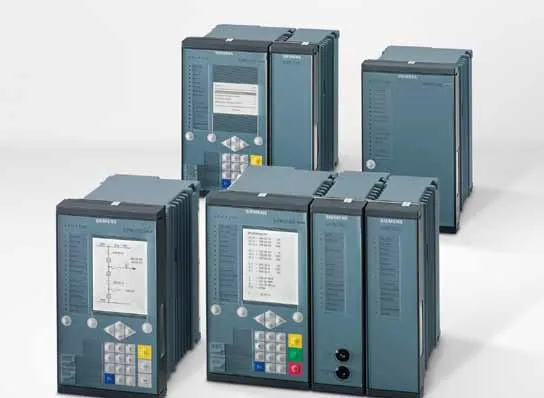
Siemens launches new protection devices for high and medium voltage
Modularity of hardware and software to meet the changing and individual requirements of modern grids during the whole life cycle
Following a trial phase with various grid operators, Siemens Smart Grid has brought the new protection device series Siprotec 5 onto the market. These devices are specifically developed for protection, automation, measurement and monitoring of electrical power systems.
Intelligent innovation
The main innovation is the modularity of hardware and software to meet the changing and individual requirements of modern grids during the whole life cycle. Thanks to the modularity of the system, phasor measurement units (PMU) can be retrofitted in all Siprotec 5 devices.
Further innovation highlights are end-to-end engineering and safety mechanisms in all links of the safety chain. Intelligent automation functions and communication as a central part of the system architecture are also featured, along with implementation of Edition 2 of the international communication standard IEC 61850 for energy automation. Climate change and a scarcity of fossil fuels call for optimization of power supplies, all the way from generation through transmission to consumption. This will exert more and more influence on the structure and operation of electrical power supply grids. Intelligent energy automation can stabilize these systems and at the same time help to save on both energy and costs. That is why Siemens developed the protection device range Siprotec 5.
“We conceived the devices for the requirements of a changing energy market. In protection relaying and automation, the challenges can be met by energy trading and by increasing infeed from renewable and decentralized energy sources into the highvoltage grids”, explained Jan Mrosik, CEO of the Smart Grid Division of the Siemens Infrastructure & Cities Sector. The Siprotec 5 devices cover the entire range of applications in electrical power systems, such as distance protection, line differential protection, bay control, transformer differential protection, overcurrent protection, motor protection and breaker management. They also form a data basis for power quality and for monitoring of electrical power supply equipments. The modular-structure hardware and software enable the configuration of application-specific devices.
High level of safety and reliabilty
To protect the equipment, Siemens has integrated complex safety mechanisms, ensuring a high level of safety and reliability. The protection functions have been constantly further developed through five relay generations and meet the requirements of the latest international standards and technologies.
Uniform system and device engineering
The Digsi 5 tool forming part of the protection device range allows integrated, uniform system and device engineering, all the way from the circuit diagram of a substation to device parameter setting and the graphic linking of primary and secondary equipment. Open interfaces enable integration into the user’s processes. All devices of the Siprotec 5 range are mutually coordinated and individually configurable; they enable the creation of customized solutions. The functions for such applications as protection, control, measurement, monitoring, power quality and fault recording are integrated.
In development of the system architecture the focus was on communication, with the result that the devices can be adapted via plug-in and add-on modules to the topology of the user’s communication structure. The requirements in terms of necessary cyber security were incorporated in the system design of Siprotec 5, in order to take account of the worldwide trend toward IP-based communication.
In implementation of the communication standard IEC 61850, Edition 2, in the Siemens protection devices, the requirements of application-oriented users and of IEC 61850 specialists were given equal consideration. Available to these users are graphic editors and overview representations for editing, whereas IEC 61850 specialists can adapt the object oriented structures of this standard to operational requirements by way of flexible engineering. Open interfaces to IEC 61850 enable vendor-independent system configuration. Seamless redundancy protocols PRP (Parallel Redundacy Protocol) and HSR (High availability Seamless Redundancy) are part of the system providing high available Ethernet communication.
The Siemens Smart Grid Division (Nuremberg, Germany) offers power providers, network operators, industrial enterprises and cities an end-to-end portfolio with products and solutions to develop intelligent energy networks. Smart Grids enable a bidirectional flow of energy and information.
They are required for the integration of more renewable energy sources in the network. In addition, power providers can run their plants more efficiently with data gained from Smart Grids. Software solutions that analyze data from Smart Grids will continuously gain importance. Thereby, the division uses in-house developments in addition to systems from software partners.








![Cross Domain [Manu + SBR + ABF + ABR + FMCG + HBR + ]](https://cmg-qa.s3.ap-southeast-1.amazonaws.com/s3fs-public/styles/exclusive_featured_article/public/2025-01/earth-3537401_1920_4.jpg.webp?itok=WaRpTJwE)
![Cross Domain [SBR + ABR]](https://cmg-qa.s3.ap-southeast-1.amazonaws.com/s3fs-public/styles/exclusive_featured_article/public/2025-01/pexels-jahoo-867092-2_1.jpg.webp?itok=o7MUL1oO)









 Advertise
Advertise


